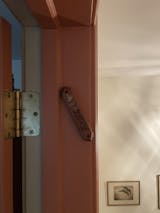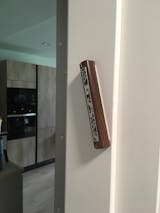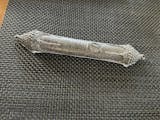How Tefillin are Made
Purchasing a pair of Tefillin can be a very confusing task. Typically, you go to the local Judaica store, and ask how much it cost for a pair of Tefillin. The person behind the counter says, "What kind of Tefillin do you want? I have Tefillin for $300 for $500 for $1000." When you ask what the difference is, you are told simply that the more expensive Tefillin are better.
The goal of this page is to help educate the consumer about how Tefillin are made and some of the differences between different kinds of Tefillin. We hope that this will help the consumer make an informed purchase.
There are three main parts to any pair of Tefillin. There are the black boxes, which make up the body of the Tefillin. These are called Batim. There are the black leather straps that are used to bind the Tefillin to the Head and the arm. These are called Retsuos. And there are the hand written scrolls that are folded up and placed inside the Batim. These are called Parshios.
Batim
Here are some of the basic rules about Tefillin Batim:
· They must be made out of one piece of leather, which was tanned by a Jewish man with the intention of being used to make Tefillin.
· They must be square to within 2%. Since the average Tefillin box measures 3.5 cm, this means that there can be no more than 0.7 mm difference between that length and the width. There is no requirement for the height.
· The box that goes on the arm has to have one compartment inside to fit one scroll. The box that goes on the head must have four compartments for four scrolls.
· On the right side of the head box is the Hebrew letter "Shin". The left side has a special letter "Shin" with 4 heads.
There are three types of Batim that are made today. They are called Gassos, Dakos, and Peshutim.
Gassos
Gassos Batim have the following advantages over other types of Batim:
· They literally fulfill the requirement that Batim be made of one piece of leather.
· They are quite durable, and if they are dented or chipped, they can usually be worked back into their perfectly square shape by any expert sofer.
· They are much less likely to warp or loose their squareness over the years.
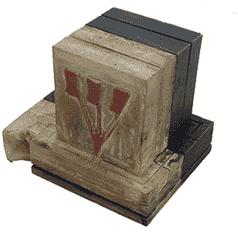
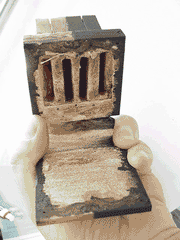
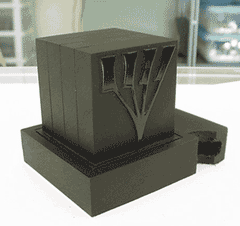
Peshutim


Dakos
Retsuos
Here are some basic rules about Retsuos:
· Retsuos must be made out of leather, which was tanned by a Jewish man with the intention of being used to make Tefillin.
· The minimum width for Retsuos is 10 mm (1 cm). If they become thinner, due to streatching or if they begin to tear, they must be replaced.
· The front side of the Retsuos must be entirely black. If any portion of the Retsuos loses it's blackness, it must be painted immediately.
Parshios
The Parshios are the most expensive part that goes into a pair of Tefillin. They generally make up 65%-75% of the cost of the complete Teffilin.

